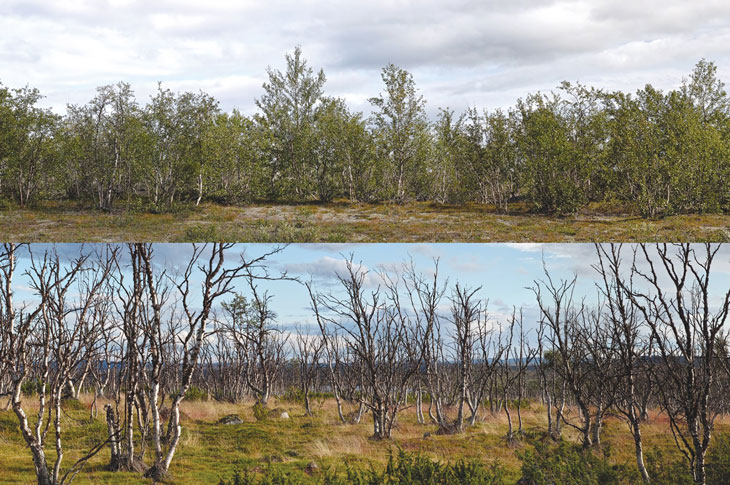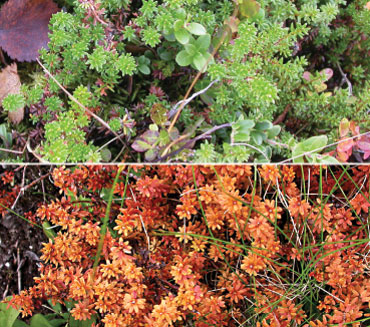Climate change made the Arctic greener, but now parts of it are turning brown – Warming trends bring more insects, extreme weather, and wildfires that wipe out plants

By Hannah Hoag
11 April 2019
(Science News) – The Chugach people of southern Alaska’s Kenai Peninsula have picked berries for generations. Tart blueberries and sweet, raspberry-like salmonberries — an Alaska favorite — are baked into pies and boiled into jams. But in the summer of 2009, the bushes stayed brown and the berries never came.
For three more years, harvests failed. “It hit the communities very hard,” says Nathan Lojewski, the forestry manager for Chugachmiut, a nonprofit tribal consortium for seven villages in the Chugach region.
The berry bushes had been ravaged by caterpillars of geometrid moths — the Bruce spanworm (Operophtera bruceata) and the autumnal moth (Epirrita autumnata). The insects had laid their eggs in the fall, and as soon as the leaf buds began growing in the spring, the eggs hatched and the inchworms nibbled the stalks bare.
Chugach elders had no traditional knowledge of an outbreak on this scale in the region, even though the insects were known in Alaska. “These berries were incredibly important. There would have been a story, something in the oral history,” Lojewski says. “As far as the tribe was concerned, this had not happened before.”

Photo: J. Bjerke and Hans Tømmervik / Science News
At the peak of the multiyear outbreak, the caterpillars climbed from the berry bushes into trees. The pests munched through foliage from Port Graham, at the tip of the Kenai Peninsula, to Wasilla, north of Anchorage, about 300 kilometers away. In summer, thick brown-gray layers of denuded willows, alders and birches lined the mountainsides above stretches of Sitka spruce.
Two summers ago, almost a decade after the first infestation, the moths returned. “We got a few berries, but not as many as we used to,” says Chugach elder Ephim Moonin Sr., whose house in the village of Nanwalek is flanked by tall salmonberry bushes. “Last year, again, there were hardly any berries.”
For more than 35 years, satellites circling the Arctic have detected a “greening” trend in Earth’s northernmost landscapes. Scientists have attributed this verdant flush to more vigorous plant growth and a longer growing season, propelled by higher temperatures that come with climate change. But recently, satellites have been picking up a decline in tundra greenness in some parts of the Arctic. Those areas appear to be “browning.” [more]
Climate change made the Arctic greener. Now parts of it are turning brown.